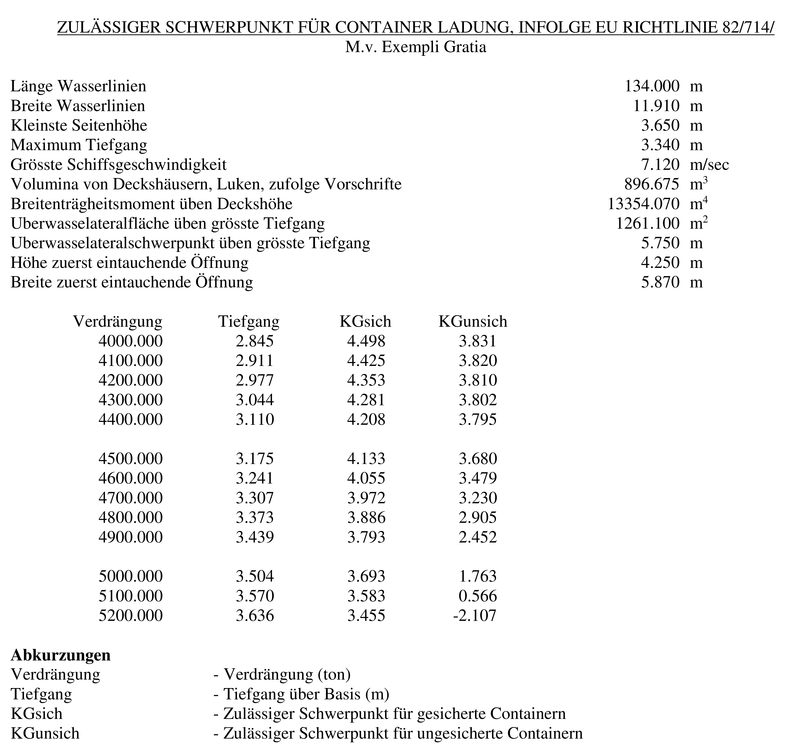In June 1986 stability requirements for container vessels on the river Rhine came into force, as presently codified in EU directive 82/714/EEC. This PIAS module calculates a table of maximum allowable VCG', which can be used to test loading conditions against these stability criteria. These regulations stipulate that such a table should be available on-board, an dshould be used when assessing each arbitrary loading condition. Given this background, this table is a bit disconnected from the mainstream of PIAS — although, obviously, the available PIAS data, such as hullform, can still be used.
Below the main menu of this module is depicted. However, prior to discuss that menu, it is noted that for the determination of the hydrostatic particulars two options exist:
- If the hullform vessel has been defined in PIAS, with Fairway or Hulldef, then the hydrostatic properties can be computed on basis of that hullform.
- If the hull form is not available the hydrostatic data should be entered into this module, as well as a number of parameters which are applied in approximation formulae.
Specific data for the Rhine stability calculation
If a PIAS hullform is available for the vessel, and it should indeed be used, then the option `derive data from hullform defined in PIAS' should be set to `yes'. The rows in this table marked with a (-) do not need to be filled in, in that case. The meaning of the other rows, as far as not obvious, is:
- Length ship (-): the length of the ship on maximum draft.
- Breadth ship (-): the breadth of the ship on maximum draft.
- Depth ship: the least depth at the side of the ship.
- Maximum draft (for lateral area): the maximum draft of the vessel. This parameter is only used to indicate from what level the lateral area (as given a few lines lower) is given.
- Speed ship: the maximum speed at maximum draft (in meters per second).
- Volume superstructures (-): the volume of deckhouses, hatch coaming etc. but only up to 1 m above the depth and not inside 0.05L from the ship's ends.
- Moment of inertia superstructures (-): the aggregated moments of inertia of the above mentioned superstructures
- Lateral Area: the lateral area of the ship, including the container cargo on board, above the maximum draft (as given a few lines higher).
- Height/breadth first opening: the location of the first non-watertight opening. If no openings exist give zeros.
- Pontoon or ship (-): specifies whether the vessel has primarily a pontoon-like or a ship-like shape. This parameter detrmines which approximation formulae to apply.
- Displacement begin/step/end: these parameters determine the range and increment of the maximum allowable VCG' table.
Enter drafts/displacements
- The drafts with the associated deplacements in metres from the base and in tons. Take care that the step size between the draughts is regular, the ratio between two successive step sizes must lie between 1/4 and 4. Start at the light draught and end at the maximum draught. If a PIAS hullform is used these values are not used at all.
Enter tank data
Here the tank dimensions should be given. In the ‘description’ column a name can be given. All tanks should be given, and please do not forget to include the container hold as tank (which is obligatory according to the regulations).
Calculate and print maximum VCG'

Example of such a table, in German.


